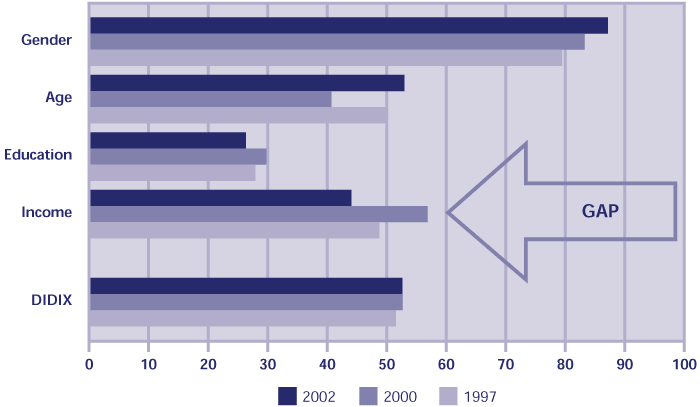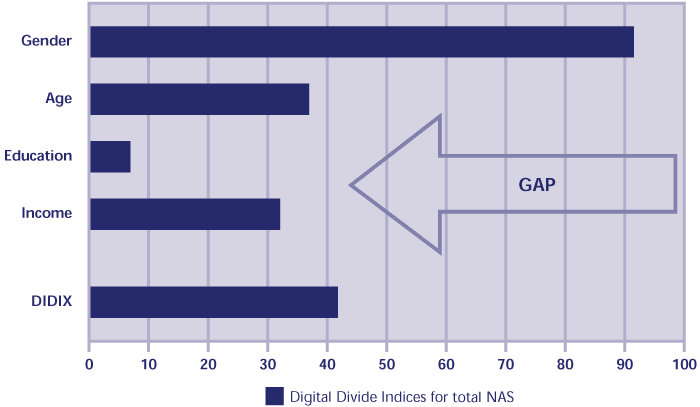
Statistical Indicators
Benchmarking the Information Society
- Statistics & indicators -
Digital divide indices for gender, age, education and income (total EU-15; 1/97 until 5/02)

Digital divide indices for gender, age, education and income (NAS-10; 2003)

Bases: 1997, 2000: N=15,900, weighted by standard Eurobarometer country and EU-15 weights; 2002, 2003: all respondents, weighted percentages
Questions: 2002, 2003: IN1, IN3, Z19, Z21
Sources: 1997: Eurobarometer 47.0, Jan-Feb 1997; 2000: Eurobarometer 54, Oct-Nov 2000; 2002: SIBIS GPS 2002; 2003: SIBIS GPS-NAS 2003
The Digital Divide Index (DIDIX;
for further information see Hüsing
& Selhofer, The Digital Divide Index – A
measure of social inequalities in the adoption of ICT.), a compound
index comprised of four indices, measures diffusion of
computer and Internet access and use amongst
the four identified 'at risk' groups in relation to the population average.
It provides a valuable insight regarding the picture at the EU level
over time. The lower the Index value the more severe is the divide, with
parity resulting in a value of 100. The picture differs for each of the
at risk groups, illustrated by the values of corresponding indices. The
gender divide has been steadily decreasing, with women improving their
position in relation to men. The decrease in the age divide appears to
be a more recent phenomenon, thus apparently reversing the initial trend
exhibited for the 1997-2000 period. However, there has been no improvement
regarding the education divide. Persistently, low levels of formal education
appear to be the most significant reason behind low rates of participation
in the Information Society. Likewise, the income divide has also been
persisting, if not becoming even more relevant in this decade.
Having considered the above digital divide indices, it becomes apparent
that, the (relative) digital divide overall, for the four at risk groups,
at the EU level has remained static, with, on aggregate, no improvement
over the last five years. Comparing NAS (for which only 2003 data are available)
and EU countries it is apparent that the gender gap in the NAS is narrower
whereas the other socio-economic determinants of ICT use are more severe.